We spent our month in Nepal hiking the Annapurna Circuit. We walked around 300 km. The trail is not a walk in wilderness, because it goes through little villages and parts of it loosely follow a newly constructed jeep road. On the sixth day of our trek, from Chame to Pisang, I noticed that the vegetation began to recede and the hills started to look like a desert.
This was because we had entered the Rain Shadow. The Rain Shadow is an area positioned right behind the Annapurna range,. This area is protected from the monsoon rains that start pouring over Nepal in late May and June. The Annapurna range acts like a wall, so when the rains come the mountain range doesn’t let them through. We were really scared of the rain and thought that it would always be cloudy and the mountain views would be obscured from our sight. It did rain on us on the first day of the trek but that was it. Afterwards we were always dry and could see great views on the trail. An interesting thing about the villages in the Rain Shadow is that their roofs are flat. After, when we got out of the Rain Shadow, the roofs immediately changed and became pitched, covered with big slabs of stone! As we started to get higher in elevation it became harder and harder to breathe. This was because as we climbed higher the atmosphere began to thin and there was less oxygen to breathe. I have never had this problem hiking back at home, because our mountains are lower. Here in Nepal though I really had to pay close attention to my breath and stop every hundred or so steps while going up. The photo below shows the highest point of our trek ~ ThorungLa Pass at 5.416 m above sea level.
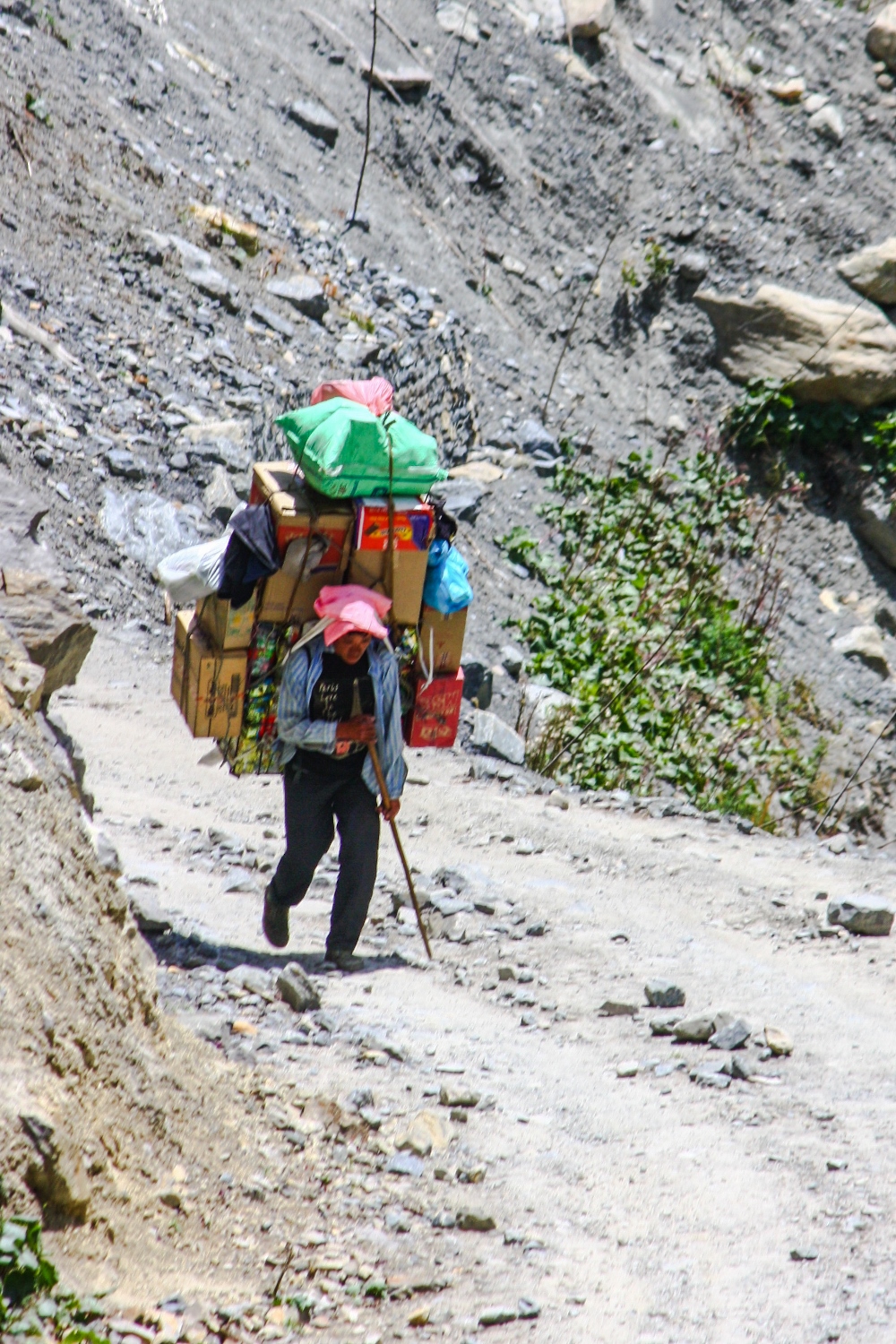
This is how deliveries are made between villages in the Annapurna region.
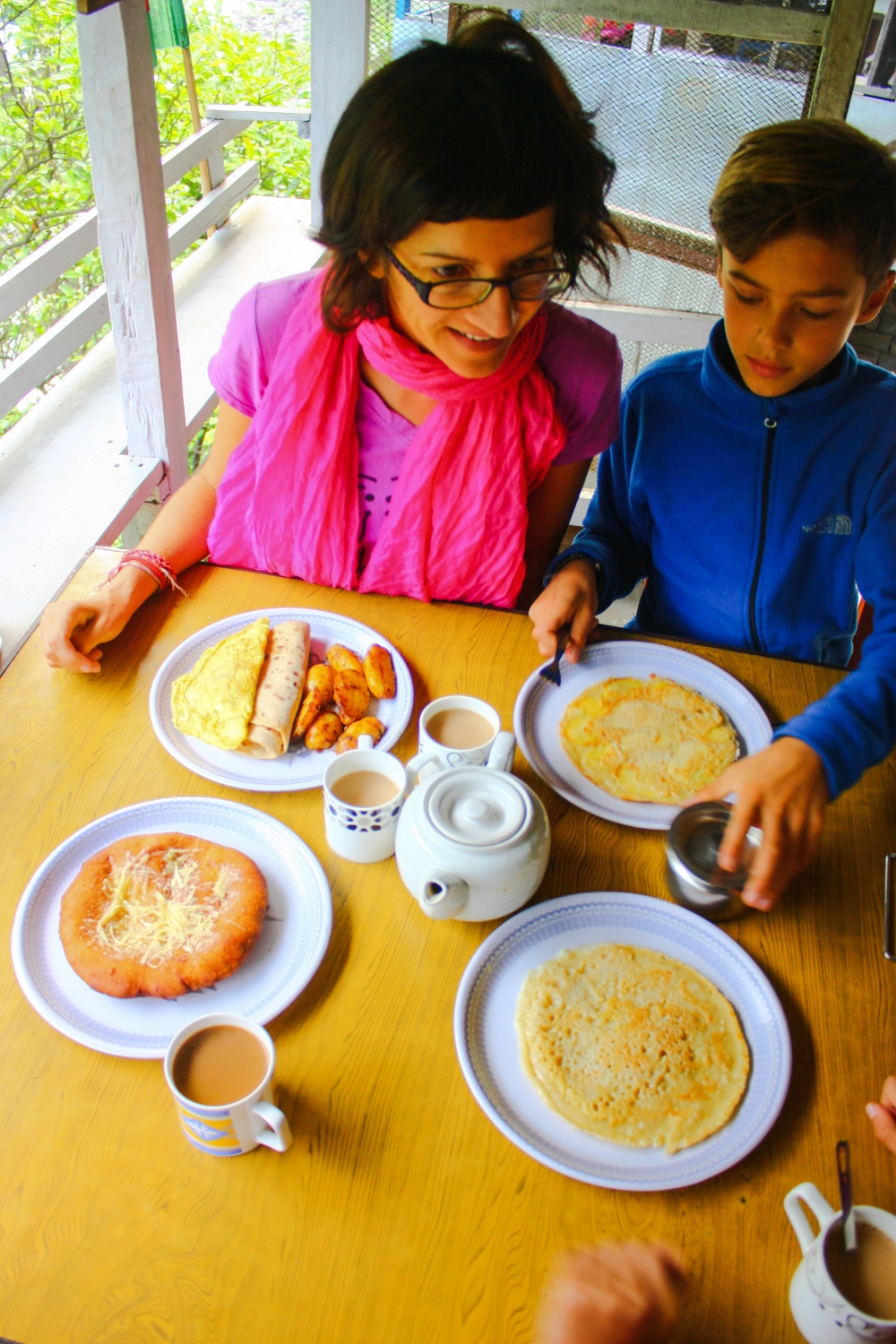
Our first breakfast on the trail: tibetan bread and pancakes:)
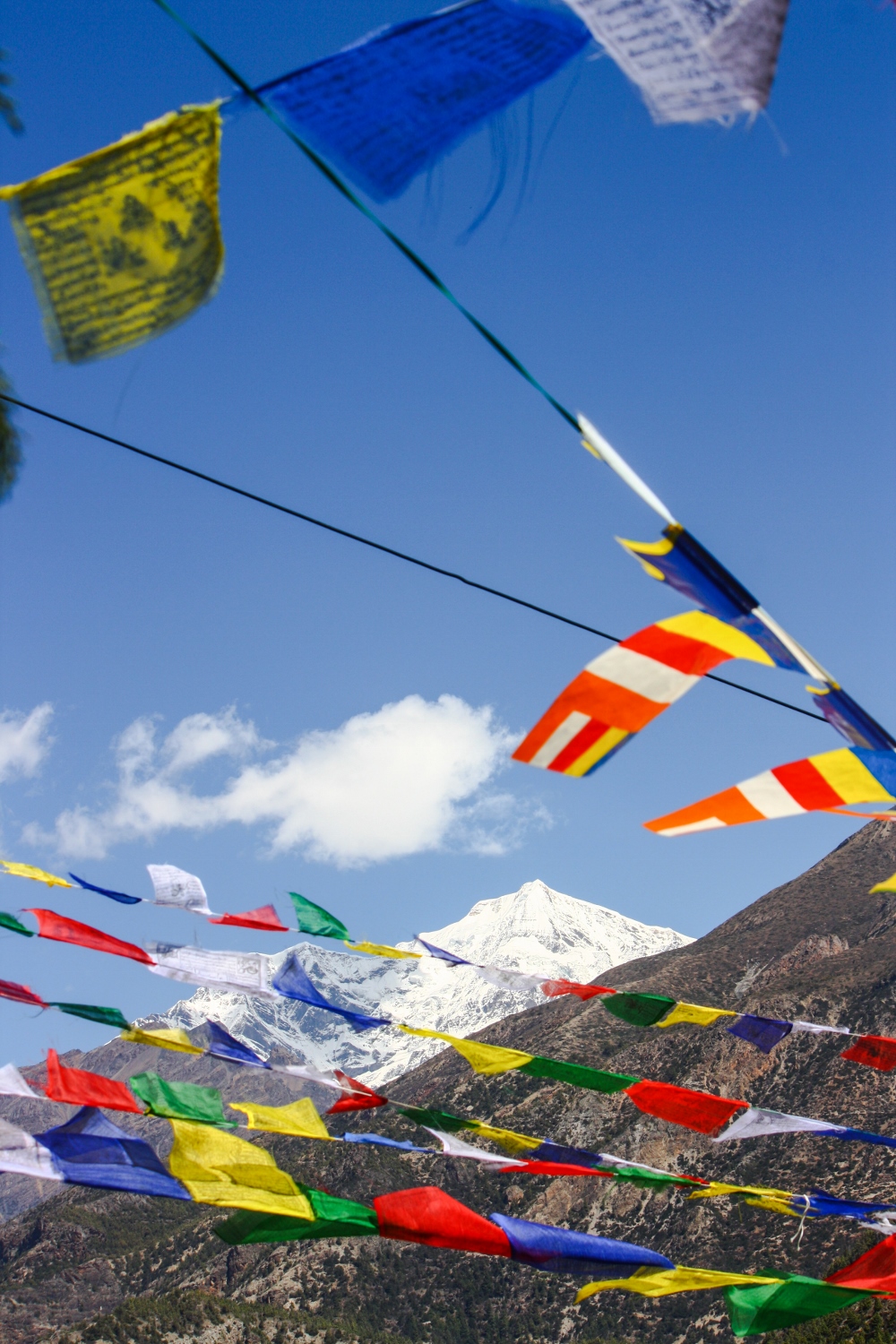
Prayer flag strings are sometimes very long!While I was having trouble breathing, locals would pass me with humongous loads on their back, which they carry with a head strap. A lot of deliveries in the region are still made by men and women walking with a loads of goods between villages, even though a jeep road was built three years ago to make their job easier and to reach the most remote of the villages.
What’s surprising though, is that in these remote and far of villages we met educated locals that spoke very good English. I would have thought that in these villages not many people would be educated. That is not the case because most of the people in Nepal are very concerned about good education and kids even walk 3 hours everyday to get to school. In all of the stores, restaurants and lodges that we went into at least one person spoke good English and it made things a lot easier for us on the trek!!!
In all of the restaurants on the circuit the menus are the same, the only thing that changes is the prices because as you get higher the food becomes more expensive. The menus are the same because the Annapurna circuit is in the Annapurna Conservation Area Project (ACAP) area and the ACAP takes care of printing all the menus the same so that trekkers choose quality over prices. This made it easy for us to choose our food!!!
Another interesting thing about the Circuit is that there are prayer flags everywhere! Tibetan Buddhists believe that when they stretch the strings of prayer flags out in the wind, the prayers that are written on the flags will be blown out into the world and help whoever is in need. I saw prayer flags on Gompas (temples), houses, hill sides, high mountain passes and bridges. The string of prayer flags are always colored with a blue flag first then white, red, green and yellow. Those primary colors are always in this order. The prayer flags are colored according to the five elements, blue symbolizing the sky and space, white symbolizing the air and wind, red symbolizing fire, green symbolizing water, and yellow symbolizing earth. According to Tibetan medicine health and well being comes from the balance of the five elements.
The best thing about the Annapurna Circuit though is that we were walking through cozy little villages not only in wilderness. In these little villages the people are super nice plus the accommodation and food is great. This made the trek very easy so we could have gone on walking for months!!!

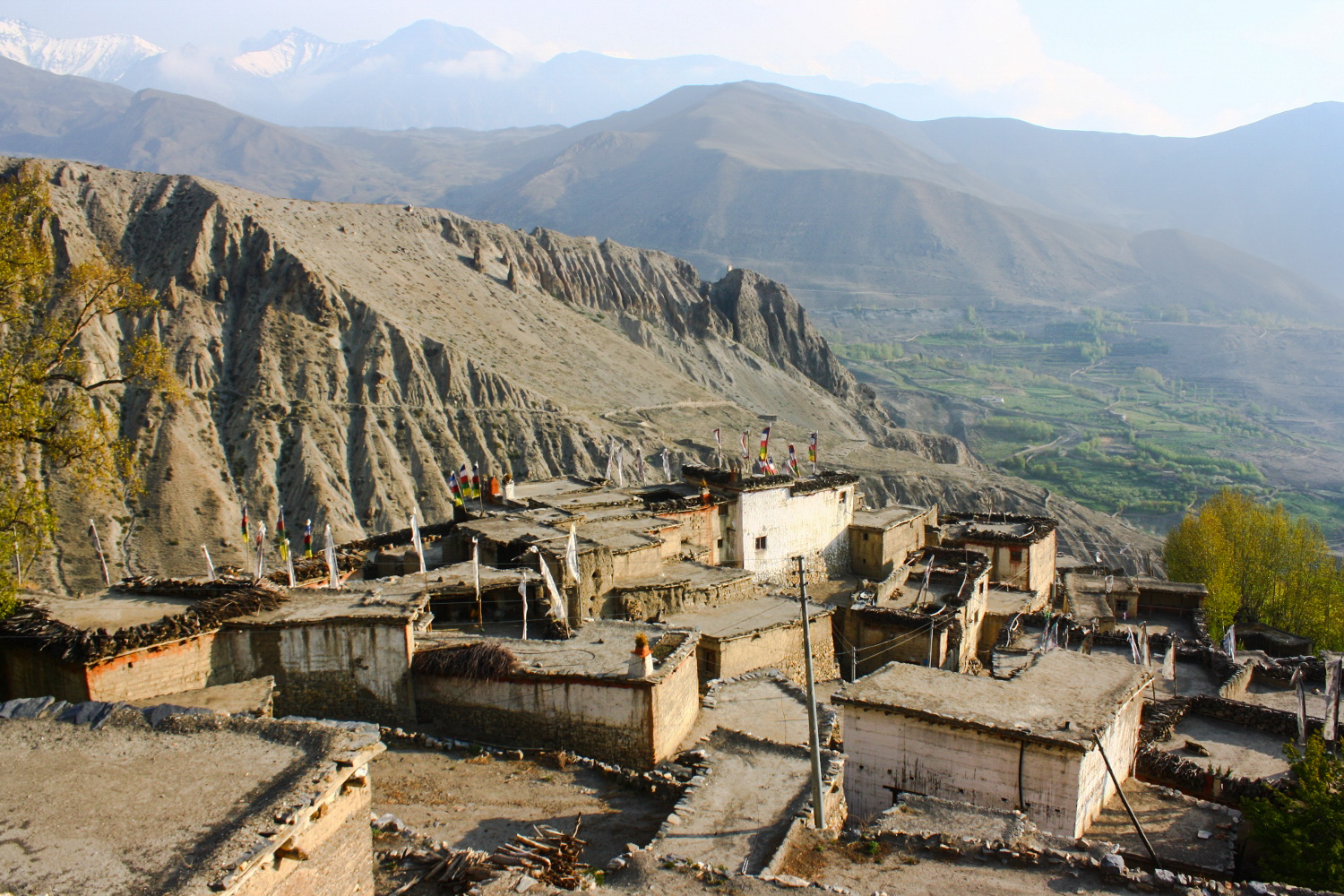
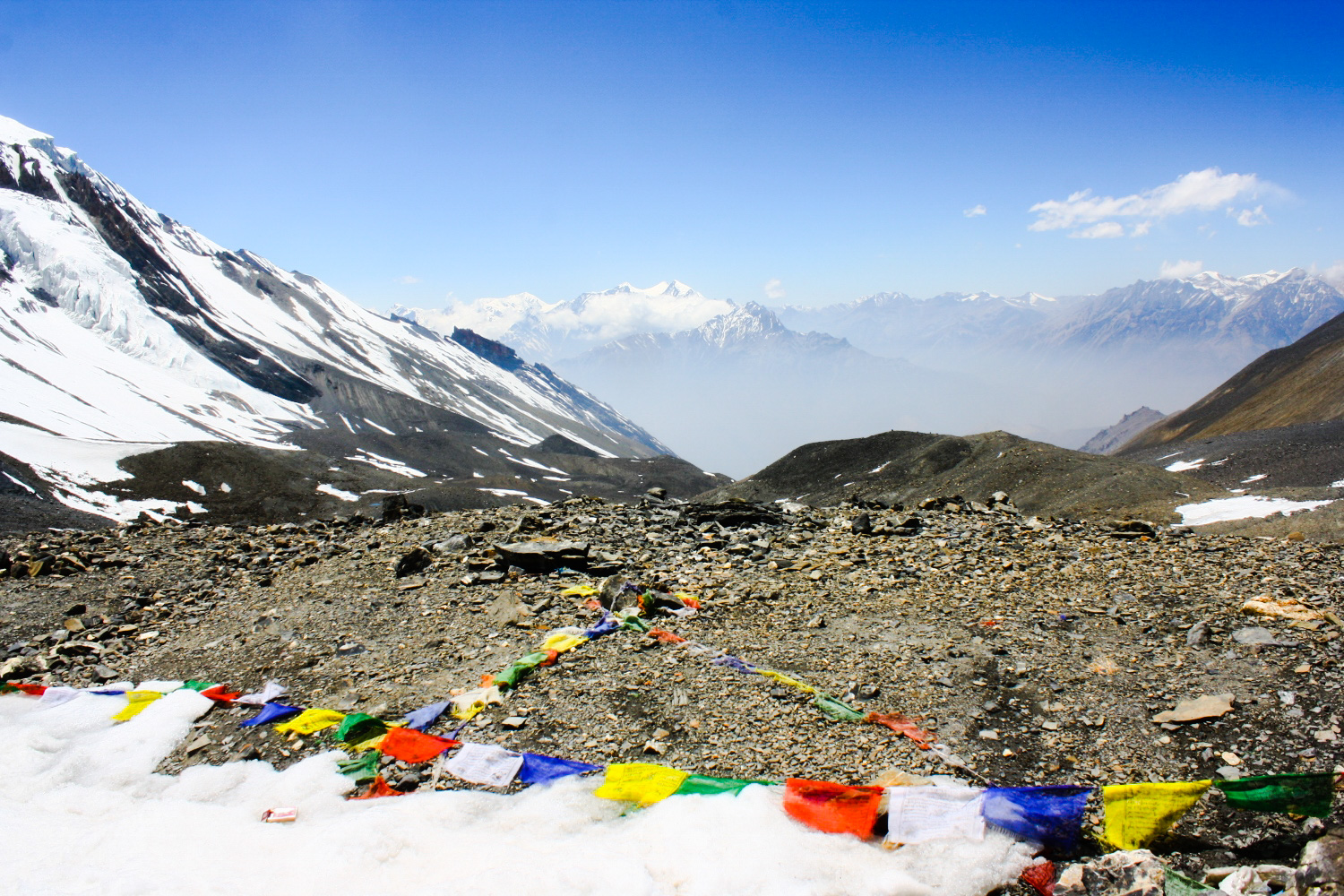
Boryan, you and Raina are becoming quite good at writing your story! Please keep contributing your observations!
wow i cant believe the places you are going i want to go on the same trip some day. But now i stuck in Asheville all thought it is a great place.
Nice writing Boryan – keep up the good work! It’s been very entertaining following your journey. Thanks!
Thank you!
Thanks for the compliments everyone, I hope you keep on reading our blog!